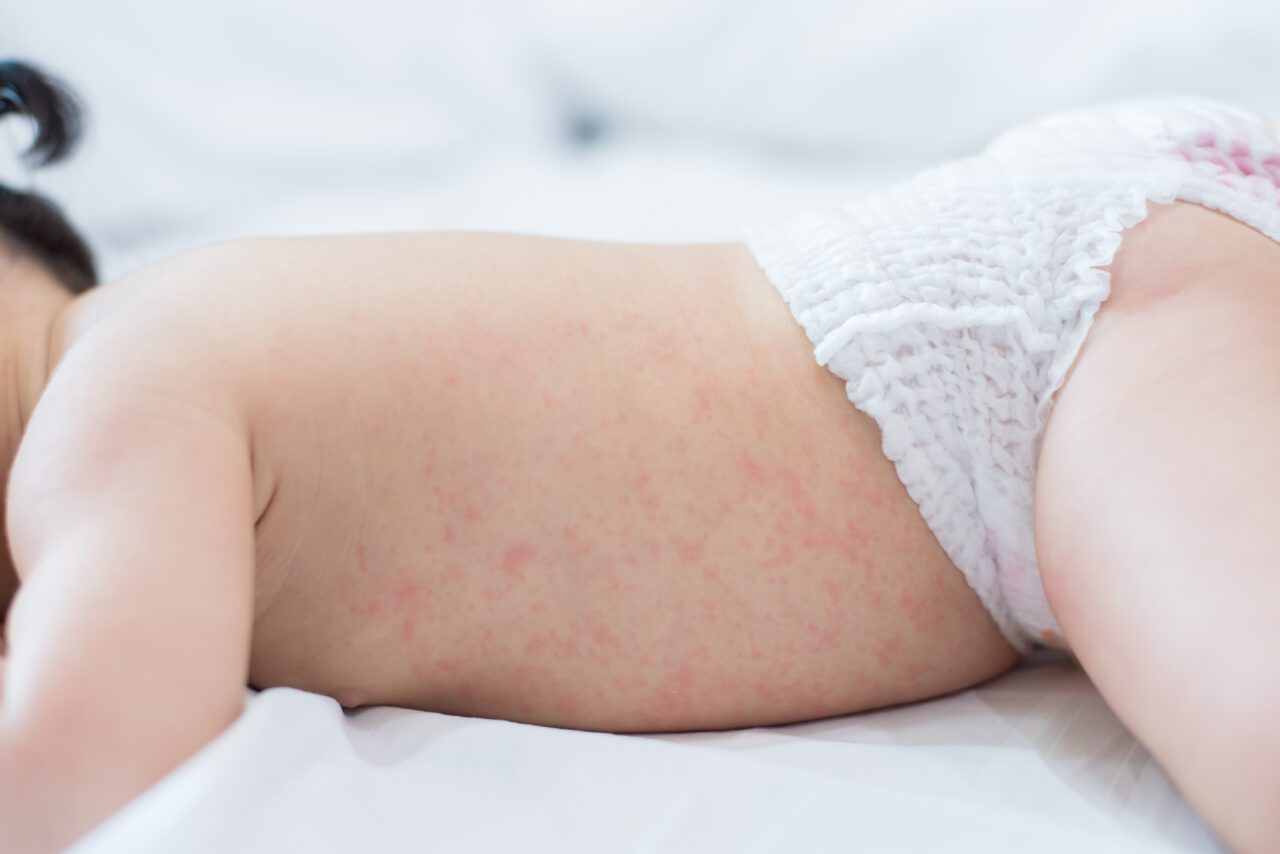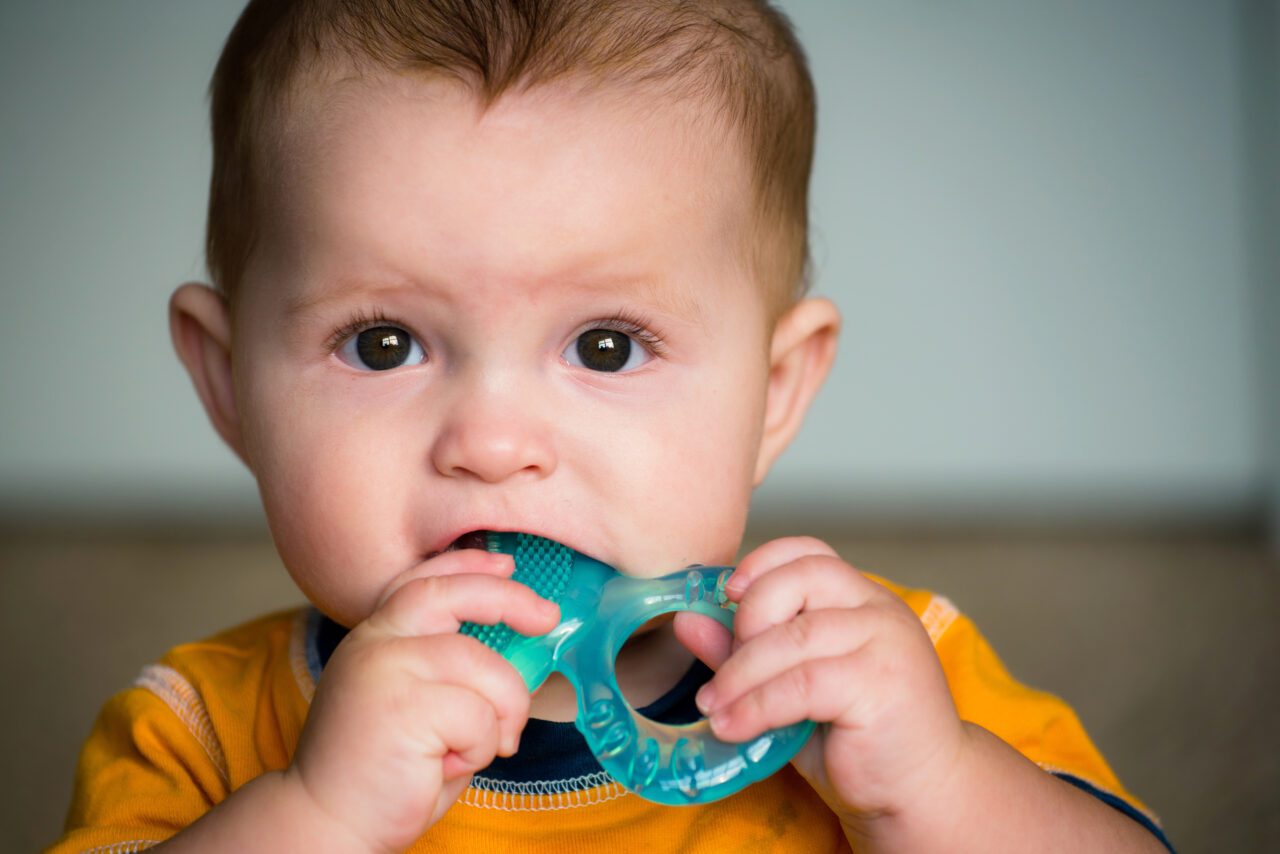As parents, we always want the best for our little ones, especially when it comes to their health and well-being. One common concern that many parents face is baby rash. It can be distressing to see your baby’s smooth skin suddenly covered in red, irritated patches. Understanding the causes of baby rash is crucial in order to provide appropriate care and relief for your little one. In this comprehensive guide, we will delve into the top causes of baby rash, exploring each factor in detail and providing expert insights to help you navigate through this common issue.
Top baby rash causes are –
- The Delicate Skin of Babies
- Diaper Rash
- Irritant Contact Dermatitis
- Atopic Dermatitis
- Allergic Contact Dermatitis
- Heat Rash
- Candidiasis
- Miliaria
- Food Allergies
- Viral Infections
- Environmental Factors
- Irritation from Clothing
- Teething
- Medications and Skincare Products
- Allergic Reaction to Insect Bites
- Contact with Irritating Plants
- Stress and Emotional Factors
- Topical Medications
- Irritation from Saliva or Spit-Up
- Overheating
- Lack of Hygiene
- Genetics and Family History
- Seasonal Changes

1. The Delicate Skin of Babies
Babies have incredibly delicate skin, which is more sensitive compared to adult skin. It is important to remember that their skin is still developing and adapting to the world around them. This heightened sensitivity makes them more prone to various skin conditions and rashes.
2. Diaper Rash: The Classic Culprit
Diaper rash is perhaps the most common type of rash experienced by babies. It occurs due to prolonged exposure to urine and feces, coupled with the friction caused by diapers. The warm and moist environment inside a diaper creates the perfect breeding ground for bacteria and fungi, leading to irritation and rash formation.
3. Irritant Contact Dermatitis: The Trouble with Irritants
Irritant contact dermatitis occurs when a baby’s skin comes into contact with irritants such as harsh chemicals, fragrances, or certain fabrics. Common irritants include soaps, laundry detergents, and baby wipes. These substances can disrupt the delicate pH balance of the baby’s skin, leading to irritation and rashes.
4. Atopic Dermatitis: A Persistent Skin Condition
Atopic dermatitis, also known as eczema, is a chronic skin condition characterized by dry, itchy, and inflamed patches of skin. It often begins in infancy and can persist into childhood and adulthood. The exact cause of atopic dermatitis is unknown, but it is believed to be a combination of genetic and environmental factors.
5. Allergic Contact Dermatitis: An Overreaction of the Immune System
Allergic contact dermatitis occurs when a baby’s skin comes into contact with a substance that triggers an allergic reaction. Common allergens include certain metals (e.g., nickel), latex, certain skincare products, and even some types of food. When the immune system overreacts to these substances, it can cause redness, swelling, and a rash to develop.

6. Heat Rash: When Sweat Becomes a Problem
Heat rash, also known as prickly heat, occurs when sweat glands become blocked, trapping sweat beneath the skin. This can happen in hot and humid weather or when a baby is overdressed. Heat rash typically presents as small, red bumps or blisters and is commonly found on areas of the body where sweat accumulates, such as the neck, armpits, and diaper area.
7. Candidiasis: An Opportunistic Fungal Infection
Candidiasis, commonly referred to as a yeast infection, is caused by an overgrowth of the Candida fungus. In babies, it often manifests as a bright red rash with well-defined borders and satellite lesions surrounding the main rash. Candidiasis thrives in warm and moist environments, making the diaper area a common location for this type of rash to occur.
8. Miliaria: The Prickling Sensation
Miliaria, also known as sweat rash or prickly heat, occurs when sweat ducts become blocked, causing sweat to accumulate beneath the skin. This can happen due to excessive sweating or wearing tight clothing that hinders proper airflow. Miliaria typically appears as small, itchy bumps or blisters surrounded by redness. It commonly affects areas of the body covered by clothing, such as the chest, back, and neck.
9. Food Allergies: An Internal Trigger
Food allergies can manifest as skin rashes in babies. Certain foods, such as milk, eggs, peanuts, and soy, can trigger an allergic reaction, leading to the development of a rash. Food allergy-related rashes may present as hives, redness, or eczema-like patches on the skin. It’s important to identify and avoid the specific food allergen to prevent recurring rashes.
10. Viral Infections: A Temporary Rash
Some viral infections can cause rashes in babies. For example, roseola is a common viral infection that leads to a high fever followed by a rash. The rash typically appears as small, pink, or red spots that spread over the body. Other viral infections, such as chickenpox or measles, also present with characteristic rashes. These viral rashes are usually temporary and resolve once the infection clears.
11. Environmental Factors: Nature’s Influence
Environmental factors can play a significant role in causing baby rashes. Exposure to extreme temperatures, such as cold weather or excessive heat, can lead to dryness and irritation of the skin. Additionally, pollutants and allergens in the air, such as pollen or pet dander, can trigger allergic reactions and result in skin rashes.
12. Irritation from Clothing: Dressing Wisely
The choice of clothing for your baby can impact their skin health. Rough fabrics, tight clothing, or clothing with irritating seams can cause friction and lead to rashes. It is advisable to opt for soft, breathable fabrics, such as cotton, and choose clothing with a loose fit to allow proper air circulation and minimize skin irritation.

13. Teething: More than Just Teeth
Teething is a milestone that every baby goes through, but it can also contribute to skin irritations. Excessive drooling during teething can cause irritation around the mouth and chin, leading to a rash known as teething rash or drool rash. Keeping the area clean and dry, using a gentle barrier cream, and providing soft, absorbent bibs can help prevent and alleviate this type of rash.
14. Medications and Skincare Products: Check the Ingredients
Certain medications or skincare products used on babies can cause adverse reactions and result in rashes. Ingredients like fragrances, dyes, and preservatives can be potential irritants for sensitive baby skin. Always check the labels and opt for hypoallergenic, fragrance-free products specifically formulated for babies to minimize the risk of skin reactions.
15. Allergic Reaction to Insect Bites: Pesky Culprits
Babies are prone to insect bites, which can trigger allergic reactions and cause rashes. Mosquito bites, in particular, can lead to red, itchy bumps on the skin. It’s essential to protect your baby from insect bites by using appropriate repellents, keeping the sleeping area free from mosquitoes, and dressing them in light-colored, long-sleeved clothing when outdoors.
16. Contact with Irritating Plants: Watch Out for Nature’s Tricks
Contact with certain plants can result in skin rashes for babies. Plants such as poison ivy, poison oak, and poison sumac contain oils that can cause an allergic reaction called contact dermatitis. The oils can be transferred to the baby’s skin through direct contact or by touching contaminated objects, such as toys or clothes. It’s important to be aware of these plants and take preventive measures, such as avoiding contact and washing the baby’s skin thoroughly if exposure occurs.
17. Stress and Emotional Factors: The Mind-Skin Connection
Believe it or not, stress and emotional factors can contribute to the development of baby rashes. Babies can experience stress and anxiety, which may manifest as skin issues, including rashes. This connection between the mind and skin is known as psychodermatology. Creating a calm and soothing environment, practicing relaxation techniques, and providing plenty of love and comfort can help reduce stress and potentially prevent stress-related rashes.
18. Topical Medications: Unwanted Side Effects
While topical medications are often used to treat various skin conditions in babies, they can sometimes cause adverse reactions. Certain creams, ointments, or lotions may contain ingredients that can irritate the baby’s skin and lead to rashes. It’s crucial to follow the instructions provided by healthcare professionals, use the recommended dosage, and be mindful of any potential side effects or allergic reactions.
19. Irritation from Saliva or Spit-Up: Protecting Sensitive Skin
Babies have a tendency to drool or spit-up, especially during the early months. The contact of saliva or stomach acids with the baby’s skin can cause irritation and lead to rashes, particularly around the mouth, chin, and neck. Gently wiping the baby’s face with a clean cloth, keeping the area clean and dry, and applying a barrier cream can help protect their sensitive skin from irritation.
20. Overheating: Finding the Right Temperature Balance
Overheating can be a contributing factor to baby rashes. When a baby becomes too hot, their sweat glands can become blocked, leading to sweat rash or miliaria. It’s important to dress babies in lightweight, breathable clothing suitable for the temperature and ensure proper ventilation in their sleeping environment. Avoiding excessive bundling or exposure to hot weather can help prevent overheating-related rashes.
21. Lack of Hygiene: Cleanliness Matters
Maintaining proper hygiene is essential in preventing rashes in babies. Regular bathing, especially after diaper changes, can help remove irritants and bacteria from the skin. Ensuring that diapers are changed frequently and the diaper area is cleaned and dried thoroughly can prevent diaper rash. Additionally, practicing good hand hygiene when handling the baby and avoiding crowded places during flu seasons can reduce the risk of infections and related rashes.
22. Genetics and Family History: Inherited Vulnerabilities
Genetics and family history can play a role in a baby’s susceptibility to skin conditions and rashes. If there is a history of eczema, allergies, or other skin disorders in the family, the baby may be more likely to develop similar conditions. While genetics cannot be changed, understanding the family history can help parents be proactive in managing potential skin issues and seeking appropriate medical guidance.
23. Seasonal Changes: Adapting to Nature’s Shifts
Seasonal changes can impact a baby’s skin, leading to rashes. During colder months, the dry indoor air and frequent temperature fluctuations can contribute to dry, irritated skin. In contrast, hot and humid weather can increase the likelihood of heat rash or fungal infections. Adapting skincare routines, using appropriate moisturizers, and adjusting clothing choices can help protect the baby’s skin and prevent seasonal-related rashes.
Frequently Asked Questions (FAQs)
Q1: Is baby rash contagious?
A1: In most cases, baby rash is not contagious. However, certain viral rashes, such as chickenpox, can be contagious. It’s important to consult a healthcare professional to determine the cause and contagiousness of the rash.
Q2: How long does a baby rash usually last?
A2: The duration of a baby rash depends on its underlying cause. Some rashes may resolve within a few days, while others may persist for weeks or longer. Proper diagnosis and treatment are crucial for effective management.
Q3: Can I use over-the-counter creams for baby rash?
A3: It is recommended to consult a healthcare professional before using any over-the-counter creams or medications on a baby’s rash. They can provide guidance on suitable options based on the specific rash and the baby’s age.
Q4: Should I avoid bathing my baby if they have a rash?
A4: Bathing is generally beneficial for baby’s skin health, even if they have a rash. However, it’s important to use gentle, fragrance-free cleansers and lukewarm water. Avoid scrubbing or excessive rubbing, as it can further irritate the rash.
Q5: When should I seek medical attention for my baby’s rash?
A5: If the rash is severe, persistent, accompanied by fever, or causing discomfort to the baby, it is advisable to seek medical attention. Additionally, if the rash spreads rapidly or shows signs of infection, such as pus or oozing, prompt medical evaluation is necessary.
Q6: Can breastfeeding prevent or alleviate baby rash?
A6: Breast milk has natural antibacterial and anti-inflammatory properties, which can help prevent and alleviate some types of baby rash. However, it’s important to address the underlying cause of the rash and follow appropriate treatment recommendations.
Conclusion
Unveiling the top causes of baby rash provides parents with valuable knowledge to understand and manage this common concern. From diaper rash to irritant contact dermatitis, viral infections to environmental factors, it’s crucial to identify the specific cause of the rash in order to provide appropriate care and relief for the baby. By maintaining proper hygiene, choosing suitable skincare products, and seeking medical advice when needed, parents can help protect their baby’s delicate skin and ensure their overall well-being.
Remember, each baby is unique, and what works for one may not work for another. If you have any concerns about your baby’s rash, it’s always best to consult a healthcare professional for a proper diagnosis and personalized guidance.




